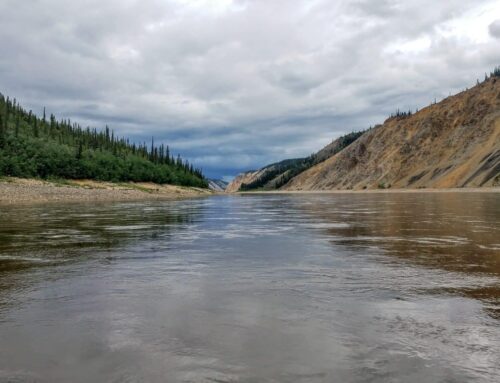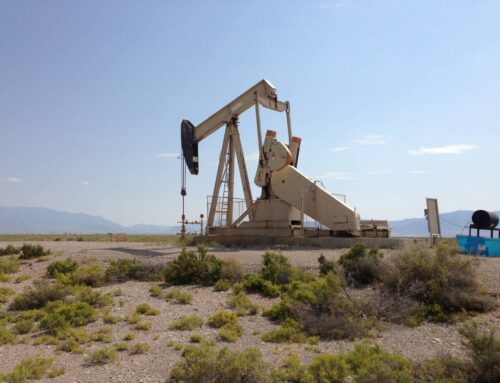On Tuesday, the Department of the Interior (DOI) released its final rule to replace, and largely rescind, a 2016 rule to limit the waste of natural gas during oil and gas production on federal lands. Currently, oil and gas companies vent, flare, or leak taxpayer-owned natural gas that’s worth tens of millions of dollars every year, but pay taxpayers for only a fraction of it because of old rules. Unfortunately, the new rule neglects to address this problem meaning more wasted resources, less accountability, and less revenue collected for taxpayers.
In February 2018, the BLM issued a proposed rule to replace and almost entirely rollback the 2016 rule. TCS submitted extensive comments on how the proposed rule would harm taxpayers by enshrining definitions for when gas is wasted, and deferring to states and tribal entities to determine when federal royalties should be collected on wasted gas. The final version of the rule released this week is nearly identical to the proposed rule.
Below is a review of the status of selected provisions which have significant impact on federal taxpayers.
| Section,
43 CFR __ |
2016 Methane Waste Rule |
New Rule |
| 3162.3-1(j) | Required operators to submit a “Waste Minimization Plan” along with Applications for Permit to Drill. In the plan, operators would have had to report certain characteristics of the planned well and specifics about the pipeline to which it would be connected, thus ensuring some preparation for capturing gas rather than venting or flaring it at well sites. | Rescinded |
| Subpart 3178 | Described conditions for the royalty-free use of production on lease (aka “Beneficial Use”). It specified when approval had to be attained before using gas on-lease without paying a royalty and certain requirements for measuring and reporting such use. | No change |
| 3179.3 | Included 18 definitions needed for the rule’s enforcement | Four definitions unchanged;
12 definitions rescinded; Two definitions modified; Two definitions added: · “Oil Well” |
| 3179.4 | Specified when the loss of oil or gas would be considered “Avoidable” or “Unavoidable.” Generally, it listed the circumstances where oil and gas losses would be “unavoidable,” assuming the operator wasn’t negligent. All other losses, and gas flared above the limits established in §3179.7 (“excess flared gas”) would be deemed “avoidable.” | Largely reverted to the definitions framework of “unavoidable” and “avoidable” from the NTL-4A. Definition of “unavoidable” amended from NTL-4A to reduce ambiguity, in part, by adopting some of the 2016 rule’s list of sources and circumstances. |
| 3179.5 | Stated that royalties are due on all avoidably lost oil or gas and not due on unavoidably lost oil or gas. | No change |
| 3179.6 | Established a general venting prohibition, stating that gas-well gas should always be captured, and that other gas should be flared rather than vented except in specific circumstances. | Amended the section title to “venting limitations” and expanded/loosened the exceptions when gas may be vented rather than flared |
| 3179.7 | Created general limits on flaring by: (1) setting a schedule of allowable flaring volumes for each development oil well that decreased over time; (2) setting target percentage for how much gas should be captured after the allowable flaring volume is hit. The target percentages increased over time.
To ease compliance, both the target percentage and “flaring allowable” volume could be calculated on a per lease/unit/communitized area basis, or averaged over the county or state in which an operator is producing oil. Flaring more than the limit established by the allowable volume and target percentage would be “excess flared gas,” and considered avoidably lost under §3179.4, and therefore subject to royalty. |
Rescinded and replaced with new §3179.201. |
| 3179.9 | Like the NTL-4A, mandated that all gas vented or flared should be estimated or measured and reported to the Office of Natural Resources Revenue, but outlined circumstances when operators would be required to measure rather than estimate volumes. | Rescinded and replaced with new §3179.301 wherein measurement is never required over estimation unless a specific finding is made by BLM. |
| 3179.101-102
3179.201 3179.202 3179.203 |
Standards for gas loss were set by these sections for certain equipment sources and operations:
Well drilling and Well Completions Requirements for Pneumatic Controllers Requirements for Pneumatic Diaphragm Pumps Storage vessels |
All rescinded |
| 3179.103 | Set limits on the volume and duration of flaring during initial well production testing | Rescinded and replaced with new §3179.101 with similar language and limits, but no time limit on requested extensions if granted by the BLM. |
| 3179.105 | Clarified that gas flared or vented during an emergency would be considered unavoidably lost and not royalty-bearing. It defined “emergency” and specifically listed what did NOT constitute emergencies. | Rescinded and replaced with new §3179.103 with similar language. In list of what’s not an emergency, replaced quantitative measure for recurring equipment failures that cause gas loss with general language. |
| 3179.204 | Set parameters for “downhole well maintenance and liquids unloading” procedures to minimize the resulting royalty-free gas loss. Included detailed requirements for notifying BLM of liquids unloading or well-purging events, and if gas loss exceeded volume or time limits. | Rescinded and replaced with new §3179.104. Eliminated all reporting requirements and some procedural parameters. Kept requirement for on-site personnel during manual well-purging, and limited royalty-free treatment of resulting waste to 24 hrs. |
Discussion
Definition of “Waste Oil or Gas”
The addition and definition of the term “waste of oil or gas” in the rule reflects what BLM calls a “policy determination,” whereby operators are not expected to conserve oil and gas resources if the estimated cost of doing so exceeds the expected value of the resources. Under the new definition, oil and gas losses that are not conserved in these circumstances are simply not “waste.” The unstated corollary is that if the lost resources aren’t waste, operators don’t have to pay us for them.
In discussion of the rule, the BLM recognized that it would be impractical to enforce the vague new definition, in part because it doesn’t specify how operators should estimate conservation costs or resource value, but included it anyway because the definition is never cited anywhere else. This naturally raises the question of why the definition is included at all. The answer is that BLM is making a statement, specifically, a statement in support of industry’s perspective.
The new policy determination directly reflects one focus of opposition to the 2016 rule by the American Petroleum Institute and other industry groups. At that time, the BLM addressed the industry perspective and dismissed it, saying there was no legal requirement for BLM to make case-by-case economic assessments when determining which losses are waste.
Instead, the 2016 rule embodied the view that operators could be expected to bear the costs of waste prevention measures so long as those costs did not lead to the premature abandonment of a particular well or reserve. That is, lost resources are waste, but operators shouldn’t be required to prevent it if it makes their overall production economically unsustainable. It is a radical departure from that for BLM to now embrace the idea that it’s not “appropriate” to impose any requirement on operators that doesn’t directly maintain or increase their profitability, and resulting resource losses are simply not waste.
In effect, the BLM has shifted from protecting the taxpayer interest to protecting industry’s.Capture target requirements
In some sense, the capture target requirements were at the heart of the 2016 rule: more cost savings from the increased sale of gas would have been generated from the capture target provision than any other. And the BLM was right to specifically address the flaring of gas from oil wells, known as “associated gas,” and its royalty treatment. Of all lost gas reported in 2017, more than 70 percent was due to flaring from oil wells.
By eliminating the capture targets and replacing them with the new §3179.201 in the final rule, the BLM is choosing not to address this source of gas waste, and not to impose royalties on it. In the new §3179.201, all flaring of associated gas is royalty-free if it’s done in accordance with the rules of applicable state or tribal authorities. This is problematic for many reasons.
One reason is that only BLM is vested with the authority and obligation to ensure federal resources are developed in the taxpayer interest. Deferring to states to decide which federal resources should incur a royalty for federal taxpayers is an abdication of BLM’s unique responsibility. It creates a patchwork of standards for companies operating on federal land in different states, and makes taxpayers’ return on federal resources subject to the decisions of myriad state policymakers.
The new provision is problematic not least because there’s no reasonable expectation that it will decrease current levels of gas waste. Oil and gas operators already comply with state and tribal regulations where they are more stringent than federal requirements. Removing federal standards for when venting and flaring is authorized will therefore not change the incentives operators already have to capture or flare natural gas. The BLM acknowledges this fact, saying it, “does not argue that each State’s existing flaring regulations will necessarily reduce flaring rates.” In effect, the BLM is admitting it does not want to change the status quo. As a result, taxpayer will continue to lose millions in royalties from the flaring of associated gas.











Get Social